“The application of water jet cutting in crafting aerospace structural frames exemplifies its precision and versatility, allowing for the creation of complex, lightweight structures that meet rigorous safety and performance standards.”
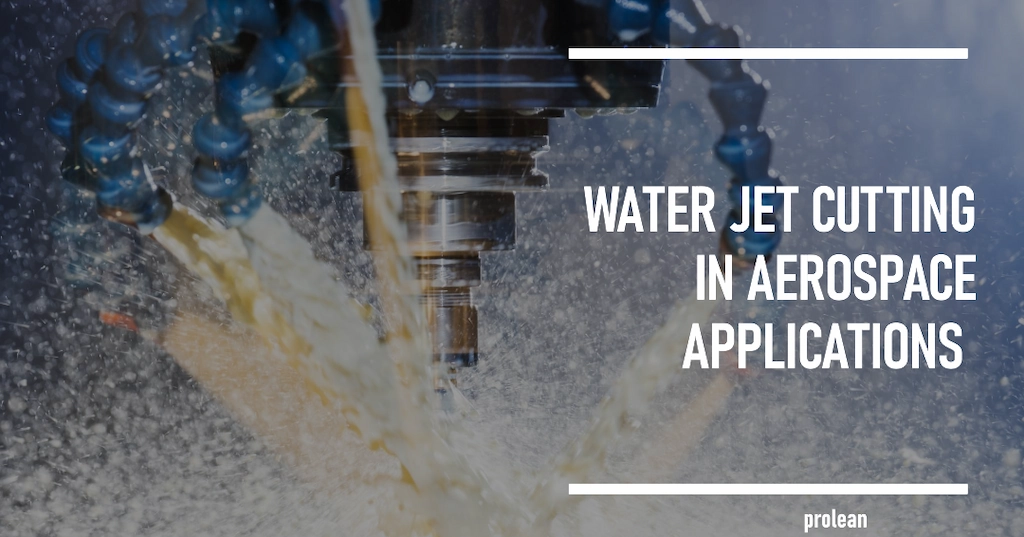
Water jet cutting is a precise and versatile manufacturing process that employs high-pressure water jets, often mixed with abrasives, to cut through materials. This process can shape various aerospace components without compromising material integrity, showing the role of waterjet cutting in aerospace applications.
Moreover, it supports the ethos of innovation that propels the aerospace sector. This article will discuss nuances of the water jet-cutting machining process in aerospace applications, highlighting their advantages, diverse uses, and more.
What is Water Jet Cutting?
This innovative technique utilizes a high-pressure stream of water (optionally mixed with abrasive particles) to slice through materials and make design geometry.
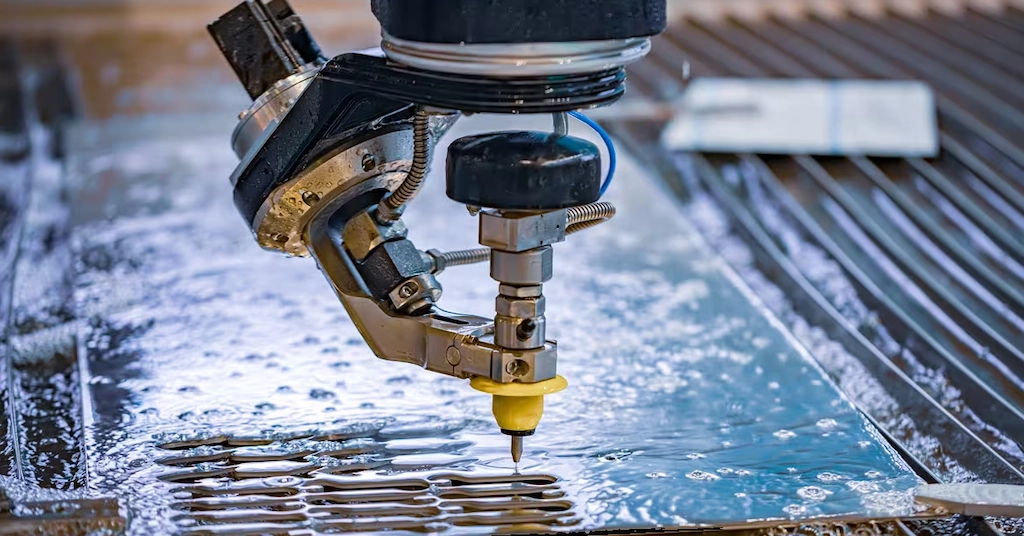
Water jet cutting process
Next, when should you use water jet cutting? It can cut many materials, including metals, composites, glass, and ceramics, without compromising structural integrity. The process creates complex shapes and designs, offering advantages over traditional cutting methods. Moreover, its non-thermal nature ensures no heat-affected zones, making it ideal for materials sensitive to high temperatures.
The Process of Water Jet Cutting
This non-thermal cutting process involves different steps to achieve clean and precise cuts. Initially, a high-pressure pump generates a stream of water, typically pressures up to 90,000 psi. This water is then focused through a small nozzle to increase its velocity, creating a cutting jet capable of cutting through materials accurately.
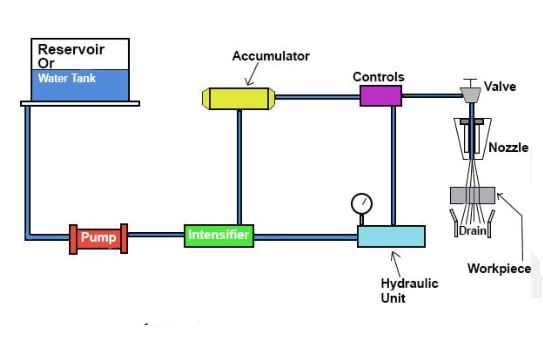
Water jet cutting mechanism
Abrasive substances like garnet are added to the water stream, while hard materials like tool steel or composites are cut. The nozzle moves over the material based on a predetermined path controlled by CNC technology. So, it ensures each cut is precise and consistent with the design specifications. For design, you can visit Water-jet cutting design guidelines here.
Try Prolean Now!
What are the Aerospace Grade Materials?
Aerospace-grade materials are engineered to meet the aerospace industry’s standards. These materials must withstand extreme temperatures, pressures, and forces while maintaining their structural integrity and performance.
Furthermore, material selection for water jet cutting in aerospace applications is critical, focusing on strength, durability, and weight reduction. Moreover, these materials often undergo specialized treatments to enhance their properties, making them ideal for various aerospace components, including airframes, engines, and avionics.
1. Titanium
Titanium is known for its exceptional strength-to-weight ratio, a crucial attribute in aerospace design. It also exhibits remarkable corrosion resistance and can endure high temperatures without losing its integrity, making it ideal for critical aerospace components such as engine parts and airframe structures.
Furthermore, titanium’s compatibility with other materials and its non-magnetic nature ensure its widespread use in the industry.
2. Aluminum Alloys
Aluminum alloys are pivotal in aerospace for their lightweight and high-strength characteristics. These alloys ( mainly 7000 series) offer excellent fatigue resistance, a vital factor for airframe components subjected to cyclic stress.
Moreover, they are relatively easy to work with and cost-effective, making them popular in commercial and military aircraft waterjet cutting. The adaptability of aluminum alloys to various manufacturing processes further enhances their applicability in aerospace.
3. Carbon Fiber Reinforced Polymers (CFRP)
CFRPs are renowned for their lightweight and high tensile strength, making them indispensable in modern aerospace engineering. These composites significantly reduce the aircraft’s weight. As a result, it contributes to fuel efficiency and performance.
Additionally, CFRPs exhibit excellent fatigue and corrosion resistance, qualities essential for the longevity of aerospace components. The versatility of CFRPs in design and fabrication also allows for innovative aerospace structures.
4. Stainless Steel
The aerospace industry relies on stainless steel for durability and heat and corrosion-resistant parts. Specifically, austenitic grades like 304 and 316 are suitable for their excellent formability and strength at high temperatures. Therefore, SS grades are common choices for components that require longevity and reliability under harsh conditions, such as landing gear and exhaust systems.
Furthermore, its ability to withstand environmental challenges ensures its continued relevance in aerospace applications.
5. Nickel Alloys
Nickel alloys maintain their strength and resist oxidation even at extreme temperatures. So, they are perfect for turbine blades and other engine components.
Subsequently, their resistance to thermal expansion ensures the reliability of aerospace engines under varying operational conditions. The exceptional properties of nickel alloys make them indispensable for ensuring the safety and efficiency of aerospace vehicles.
Can Water Jet Cut these Aerospace Grade Materials?
The method cuts following aerospace-grade materials into intricate designs and components with precision.
Table: Aerospace materials and Water-jet cutting
| Material Type | Can Water Jet Cut? | Description | Expected Tolerance |
| Titanium | Yes | High strength-to-weight ratio, corrosion-resistant. | ±0.005″ |
| Aluminum Alloys | Yes | Lightweight, high strength, fatigue-resistant. | ±0.005″ |
| Carbon Fiber Reinforced Polymers | Yes | Lightweight, high tensile strength, corrosion-resistant. | ±0.010″ |
| Stainless Steel | Yes | Durable, heat and corrosion-resistant. | ±0.005″ |
| Nickel Alloys | Yes | High-temperature resistance maintains strength in extreme heat. | ±0.005″ |
| Magnesium Alloys | Yes | Very lightweight, adequately strong, and stiff. | ±0.005″ |
| Glass Fiber Reinforced Polymers | Yes | Strong, durable, cost-effective alternative to CFRP. | ±0.010″ |
| Aramid Fiber Reinforced Polymers | Yes | Impact-resistant, thermal stability, chemical resistant. | ±0.010″ |
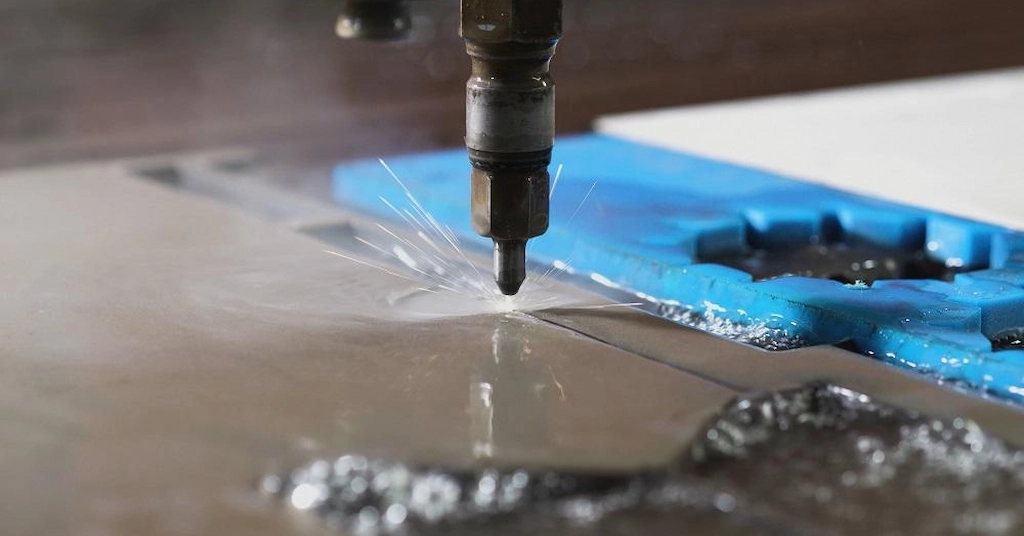
CNC Water jet machine cutting the aerospace-grade material
Examples of Water Jet Cutting Aerospace Applications
Water jet cutting technology’s ability to cut through a vast array of materials without compromising their structural integrity is a primary reason for its preference in aerospace applications. Moreover, the absence of heat-affected zones ensures that the materials retain their original properties.
Consequently, its application diversity spans from structural components to intricate parts, underlining its pivotal role in aerospace manufacturing.
Engine Components
It allows for the precise cutting of high-strength, heat-resistant materials like titanium and nickel alloys, which are used extensively in engine parts. Moreover, the absence of thermal stress ensures the material’s properties remain unchanged, which is critical for components exposed to high temperatures.
Additionally, the precision of water jet cutting enables the creation of components with complex geometries, which are essential for optimizing engine performance and efficiency.
Aerospace Structural Frames
The construction of aerospace structural frames benefits significantly from water jet cutting. This method is adept at slicing through aluminum alloys and composites, materials commonly used in airframes. Furthermore, the precision and versatility of water jet cutting facilitate the manufacturing of frames with complex designs and tight tolerances.
Consequently, its application in creating structural frames underscores its value in building durable and lightweight aerospace structures.
Interior Cabin Components
Materials like CFRPs and GFRPs, known for their lightweight and strength, are often used for interior panels, seats, and overhead bins. The non-thermal nature of water jet cutting means there’s no risk of warping or weakening these materials, ensuring their safety and comfort.
Next, the ability to cut detailed patterns and designs enhances the aesthetic appeal of cabin interiors.
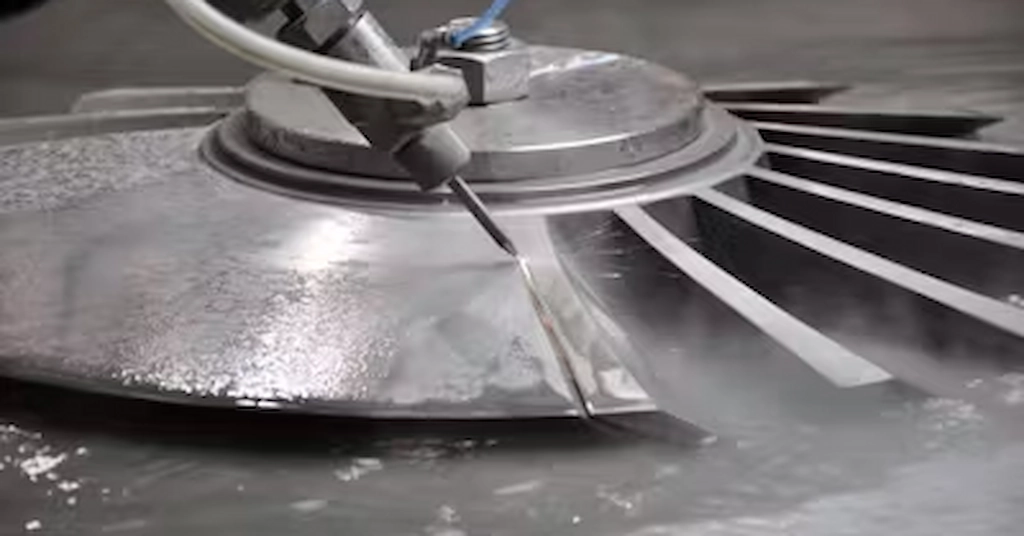
Aerospace manufacturing with water jet cutting
Insulation Materials
Cutting insulation materials for aerospace applications is another area where water jet cutting excels. These materials must offer exceptional thermal and acoustic insulation, and water jet machines can shape the materials accordingly.
Furthermore, water jet cutting offers significant advantages, including clean cuts and the ability to handle soft, fibrous materials without fraying or distortion. As a result, water jet cutting ensures that insulation fits perfectly around components and within airframes, enhancing the vehicle’s overall performance and passenger comfort.
Electrical Systems and Wiring
Finally, water jet cutting is instrumental in shaping components for electrical systems and wiring harnesses in aerospace vehicles. The method’s precision accurately cuts insulating materials and components used in the electrical systems. It is essential for a perfect fit and protection against short circuits.
Related: Top 5 Industries Leveraging Waterjet Cutting Technology
Try Prolean Now!
Advantages of Water Jet Cutting in Aerospace Applications
Water jet cutting brings several benefits to aerospace parts manufacturing. This method is known for processing diverse materials, from metals to composites.
Here are the advantages of using water jet cutting in aerospace applications;
- No Heat-Affected Zones: Water jet cutting does not generate heat, ensuring materials retain their strength and properties.
- High Precision and Accuracy: It offers exceptional cutting accuracy, essential for the exacting standards of aerospace components.
- Versatility in Material Compatibility: This method can cut a wide range of materials, including metals, composites, and synthetics, used in aerospace manufacturing.
- Complex Shapes and Intricate Designs: Water jet cutting can create complex geometries and detailed parts required in aerospace engineering.
- Minimal Material Waste: The cutting process is highly efficient, producing minimal waste and thus optimizing material usage.
- Environmentally Friendly: It is a clean process that does not produce hazardous waste, aligning with the industry’s move towards sustainable manufacturing practices.
- Safe Operation: The method eliminates risks associated with high-temperature cutting techniques, providing a safer workplace.
- Reduction in Finishing Requirements: Water jet cuts are clean and precise, often eliminating the need for additional finishing processes.
- Flexibility in Prototyping and Production: It supports rapid prototyping and can be easily scaled up for production, offering flexibility from design to manufacturing.
- No Material Hardening: Since there’s no heat involved, there’s no risk of hardening materials at the cut edges, which could affect machining.
Aerospace Components from Water Jet Cutting
The versatility of the water jet cutting process enables the processing of a wide range of materials to create diverse aerospace parts and products.
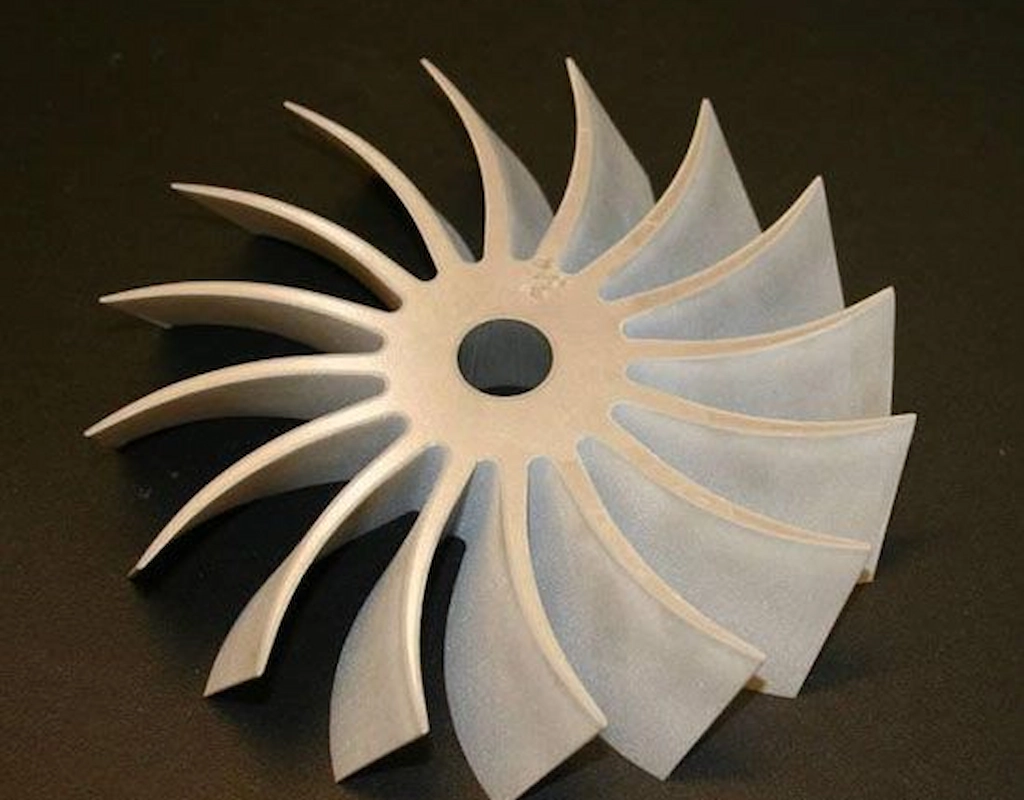
Aerospace part from water jet cutting
The following are the typical applications of water-jet cutting in aerospace manufacturing:
- Turbine blades
- Engine components
- Airframe sections
- Fuselage panels
- Wing spars
- Flap and slat tracks
- Landing gear parts
- Control surface components
- Ventilation system parts
- Fuel system components
- Electrical enclosures
- Avionics mounts
- Seat frames
- Door frames
- Window frame components
- Brackets and fittings
- Heat shields
- Insulation panels
- Hydraulic system parts
- Aerospace tooling and fixtures
Water Jet Cutting vs CNC Machining in Aerospace Manufacturing
Fundamentally, water jet cutting employs a high-pressure stream of water, possibly mixed with abrasive materials, to cut through various materials. In contrast, CNC machining involves the removal of material using cutting tools to shape the part. Moreover, CNC machining is renowned for its precision in creating complex geometries and the ability to work with diverse materials.
Table: CNC vs Water Jet Cutting
| Feature | Water Jet Cutting | CNC Machining |
| Cutting Process | Uses high-pressure water, sometimes with abrasives. | Uses cutting tools to remove material. |
| Material Limitations | Can cut almost any material without thermal damage. | Best suited for metals, plastics, and composites. |
| Precision | High precision, especially for complex cuts. | Extremely high precision, suitable for intricate parts. |
| Thermal Impact | No thermal impact, preserving material integrity. | May cause thermal stress in some materials. |
| Setup and Operation Cost | Generally lower for thick materials. | Higher, especially for complex geometries. |
| Finish Quality | Smooth finish, may require minimal post-processing. | Can achieve a wide range of finishes with tools. |
Related: CNC Milling for Aerospace: Precision and Perfection
Water Jet Cutting vs Plasma Cutting in Aerospace Manufacturing
Plasma cutting employs a jet of ionized gas heated to an extremely high temperature to melt and cut through conductive metals. This method is faster for certain metals but can introduce heat-affected zones (HAZ), potentially altering the original properties. In contrast, water jets maintain the integrity of a wide range of materials. However, plasma cutting is known for its efficiency with specific metal types, especially in high-volume scenarios.
Table: Waterjet Vs Plasma Cutting
| Feature | Water Jet Cutting | Plasma Cutting |
| Material Compatibility | Capable of cutting a wide range of materials. | Best suited for conductive metals. |
| Thermal Impact | No thermal impact, preserving material integrity. | Generates heat, causing potential HAZ. |
| Precision | High precision, suitable for intricate designs. | Less precise, with wider kerf. |
| Speed | Generally slower compared to plasma. | Faster on conductive metals. |
| Cost | Higher operational costs for abrasive materials. | Lower operational costs, especially on thin metals. |
| Finish Quality | Leaves a smooth finish, often without the need for further processing. | May require secondary finishing to smooth the edges. |
Related: Laser Cutting Vs. Waterjet Cutting: Analyzing Capabilities in the Manufacturing Landscape
Try Prolean Now!
Water Jet Cutting Services for Aerospace at ProleanTech
Prolean offers specialized water jet cutting services tailored for the aerospace industry, where precision and material integrity are paramount. Our CNC water jet technology enables us to cut many aerospace-grade materials.
Furthermore, our process ensures that materials retain their original properties, avoiding thermal distortion entirely. This capability is crucial for aerospace components that demand the highest standards of precision and durability.
Moreover, our team of experts understands the unique requirements of the aerospace sector. We provide customized waterjet cutting service that meet the specific needs of each project, from prototyping to full-scale production. Drop your water jet cutting design here to know more!
Read more:
- Maximizing the Efficiency of Manufacturing Parts with E-Coating Process
- CNC Cutting: Transforming Modern Manufacturing Processes
Summing Up
Overall, water jet cutting is indispensable in the aerospace sector due to its precision, versatility, and efficiency, which are demands of modern aerospace manufacturing. Its ability to cut without compromising material integrity, combined with its environmental and safety benefits, positions it as a preferred method for the industry.
As the aerospace industry requires various standards, water jet cutting in aerospace applications addresses that necessity. In this context, Prolea’s water Jet Cutting Services meet the challenges of aerospace manufacturing related to technology, precision, and industry standards.
FAQs
What materials can water jet cutting handle?
Water jet cutting can process various materials, from metals and plastics to composites.
How does water jet cutting compare to laser cutting?
Unlike laser cutting, water jet cutting offers broader material versatility and prevents heat-induced distortions,
Can water jet cutting achieve tight tolerances?
Yes, it is renowned for its ability to produce parts with tight tolerances ( 0.003″ to 0.005″).
Is water jet cutting environmentally friendly?
Yes, it minimizes waste and avoids the harmful emissions associated with some traditional cutting methods.
What are the safety benefits of water jet cutting?
It reduces the risk of accidents by eliminating the heat and sparks associated with thermal cutting processes.
How does Prolean enhance water jet cutting for aerospace?
Prolean leverages advanced technology and expertise to offer precise, efficient, and innovative water jet-cutting services tailored for the aerospace industry.
Resources
1. Dixit, A., & Dave, V. (2015). Water jet machining: An advanced manufacturing process. JIET Group of Institutions. Retrieved from Research Gate Publication
2. Kale, A., Singh, S.K., Sateesh, N., & Subbiah, R. (2020). A review of the abrasive water jet machining process and its process parameters. Materials Today: Proceedings, 26(Part 2), 1032-1036. https://doi.org/10.1016/j.matpr.2020.01.309



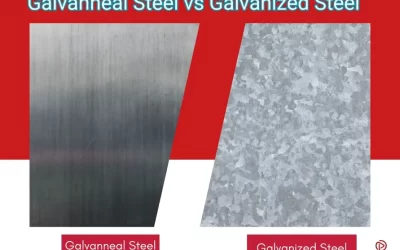
Do you think waterjet can achieve the ±0.010″ with Glass Fiber Reinforced Polymers?
Yes it can. However, it is demanded to optimize the cutting parameters. And using the advanced CNC waterjet cutting machine is equally important for tight tolerances .
Absolutely, just set the correct pressure and alignment!